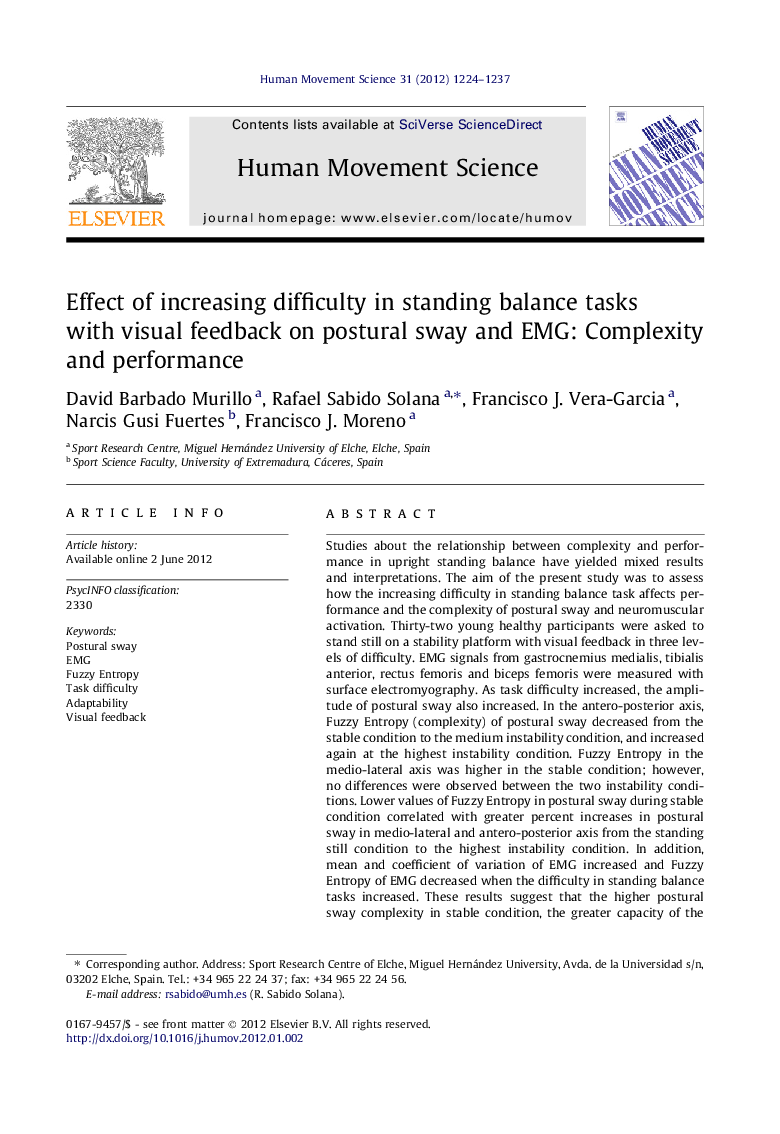| کد مقاله | کد نشریه | سال انتشار | مقاله انگلیسی | نسخه تمام متن |
|---|---|---|---|---|
| 928382 | 922362 | 2012 | 14 صفحه PDF | دانلود رایگان |

Studies about the relationship between complexity and performance in upright standing balance have yielded mixed results and interpretations. The aim of the present study was to assess how the increasing difficulty in standing balance task affects performance and the complexity of postural sway and neuromuscular activation. Thirty-two young healthy participants were asked to stand still on a stability platform with visual feedback in three levels of difficulty. EMG signals from gastrocnemius medialis, tibialis anterior, rectus femoris and biceps femoris were measured with surface electromyography. As task difficulty increased, the amplitude of postural sway also increased. In the antero-posterior axis, Fuzzy Entropy (complexity) of postural sway decreased from the stable condition to the medium instability condition, and increased again at the highest instability condition. Fuzzy Entropy in the medio-lateral axis was higher in the stable condition; however, no differences were observed between the two instability conditions. Lower values of Fuzzy Entropy in postural sway during stable condition correlated with greater percent increases in postural sway in medio-lateral and antero-posterior axis from the standing still condition to the highest instability condition. In addition, mean and coefficient of variation of EMG increased and Fuzzy Entropy of EMG decreased when the difficulty in standing balance tasks increased. These results suggest that the higher postural sway complexity in stable condition, the greater capacity of the postural control system to adapt to the platform instability increases. In addition, changes in the complexity of EMG modulated by task difficulty do not necessarily reflect similar changes on postural sway.
► We study the relationship between postural sway and neuromuscular activation.
► We examine the capacity to adapt to various levels of difficulty in balance task.
► Complexity across the levels of difficulty resulted in a U-shape curve.
► Neuromuscular complexity was not altered in the same way as postural sway complexity.
► Relationship between neuromuscular complexity and postural sway depends on task.
Journal: Human Movement Science - Volume 31, Issue 5, October 2012, Pages 1224–1237